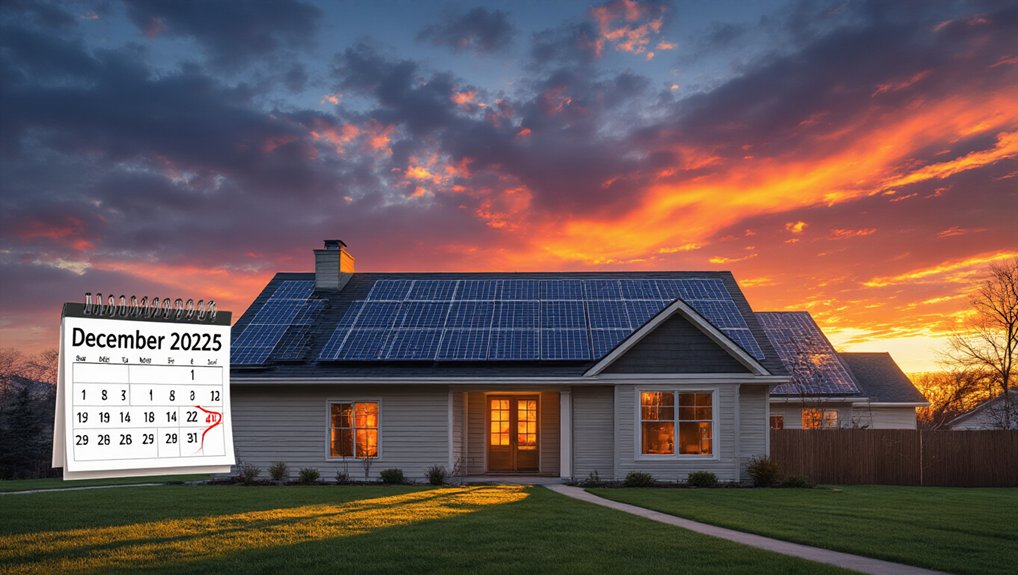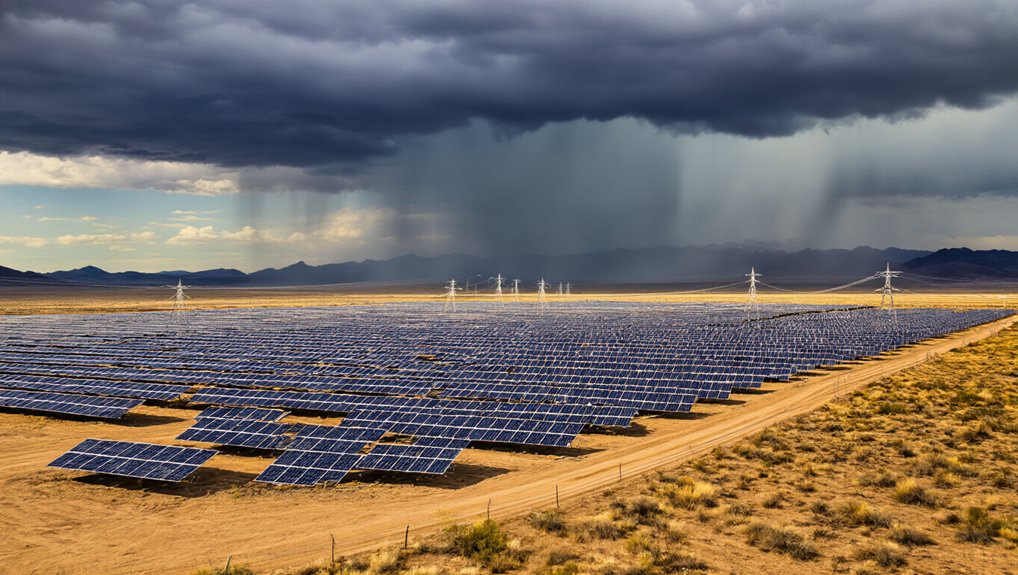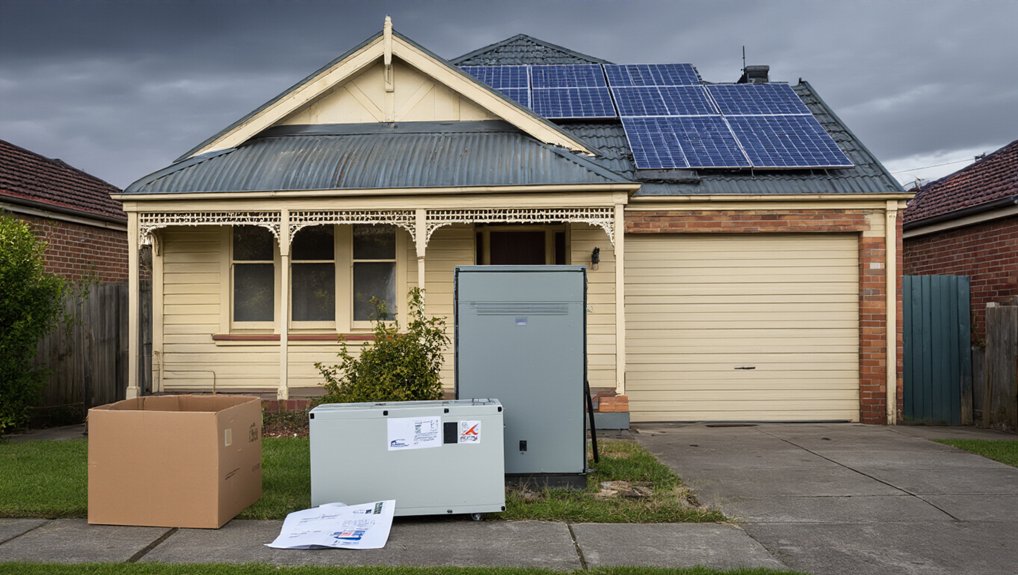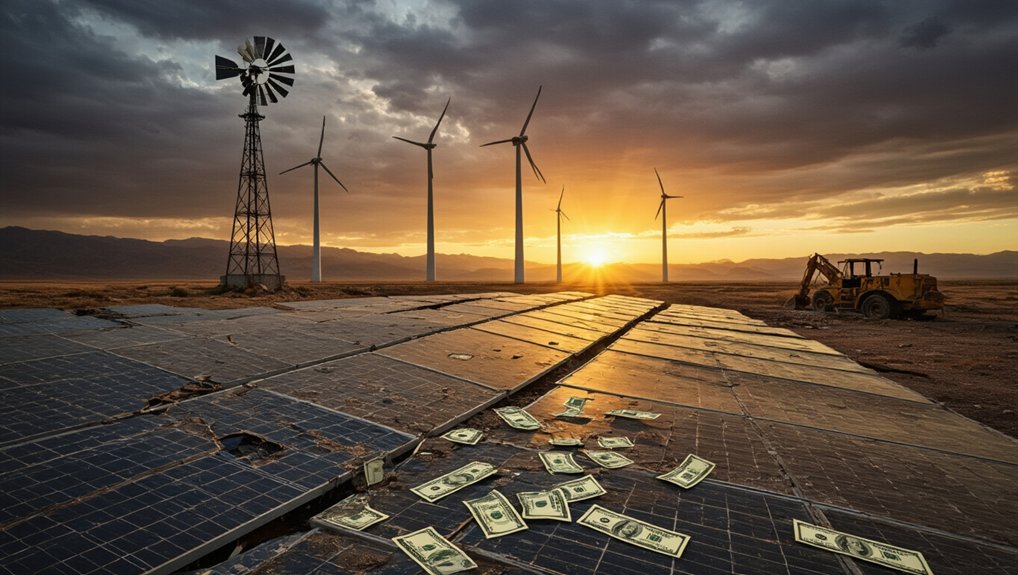As the clock ticks toward 2026, homeowners considering solar panels face a brutal financial cliff. The 30% federal tax credit that made solar installations palatable to average Americans is vanishing—not phasing out gradually, but disappearing overnight on December 31, 2025.
Time’s running out on solar savings—the 30% tax credit vanishes at midnight, December 31, 2025.
No extensions. No grace periods. Just gone.
The rules are simple but unforgiving. Systems must be fully installed and commissioned by year’s end. Half-finished projects? Tough luck. Inspections delayed until January? Sorry, you’re out thirty percent. The government doesn’t do partial credit, apparently.
Industry experts predict a mad dash through 2025. Installers will be swamped with last-minute customers desperate to cash in before the window slams shut. But what happens after? The solar environment changes dramatically when prices effectively jump by nearly a third.
Small installation companies face the harshest reality. Many built their entire business model around that sweet 30% discount. Without it, consumer demand will likely plummet. The impending elimination stands in stark contrast to the credit’s long evolutionary history since its first introduction during the energy crises of 1978. Much like the recently halted appliance efficiency standards, this shift prioritizes industry concerns over projected consumer savings. The big players with diverse revenue streams might weather the storm. The little guys? Not so much.
It wasn’t supposed to end like this. Earlier proposals included gradual step-downs that would have given the industry time to adapt. But the final budget signed on July 4, 2025, delivered a different message: party’s over, folks.
Commercial solar credits will continue under different rules, creating an awkward bifurcation in the market. Residential installers may pivot to commercial projects or maintenance services just to keep the lights on. Ironic, isn’t it?
Supply chain bottlenecks and permitting delays already plague the industry. Add the year-end rush, and it’s a perfect storm. Homeowners thinking “I’ll just wait until next summer” might find themselves without contractors or credits. The elimination of this incentive is part of the One Big Beautiful Bill Act that abruptly accelerates the credit’s expiration.
The post-2026 solar market will be leaner and meaner. Companies that survive will have adapted quickly or diversified smartly. The rest will join the sunset—fading away with the tax credit that once made them shine.
References
- https://www.greenlancer.com/post/solar-tax-credit-going-away
- https://www.greenlancer.com/post/solar-energy-tax-credit-2025
- https://www.solar.com/learn/trump-and-the-fate-of-the-30-solar-tax-credit/
- https://www.youtube.com/watch?v=bipNWig0Srk
- https://www.projectfinance.law/publications/2025/july/effects-of-one-big-beautiful-bill-on-projects/









